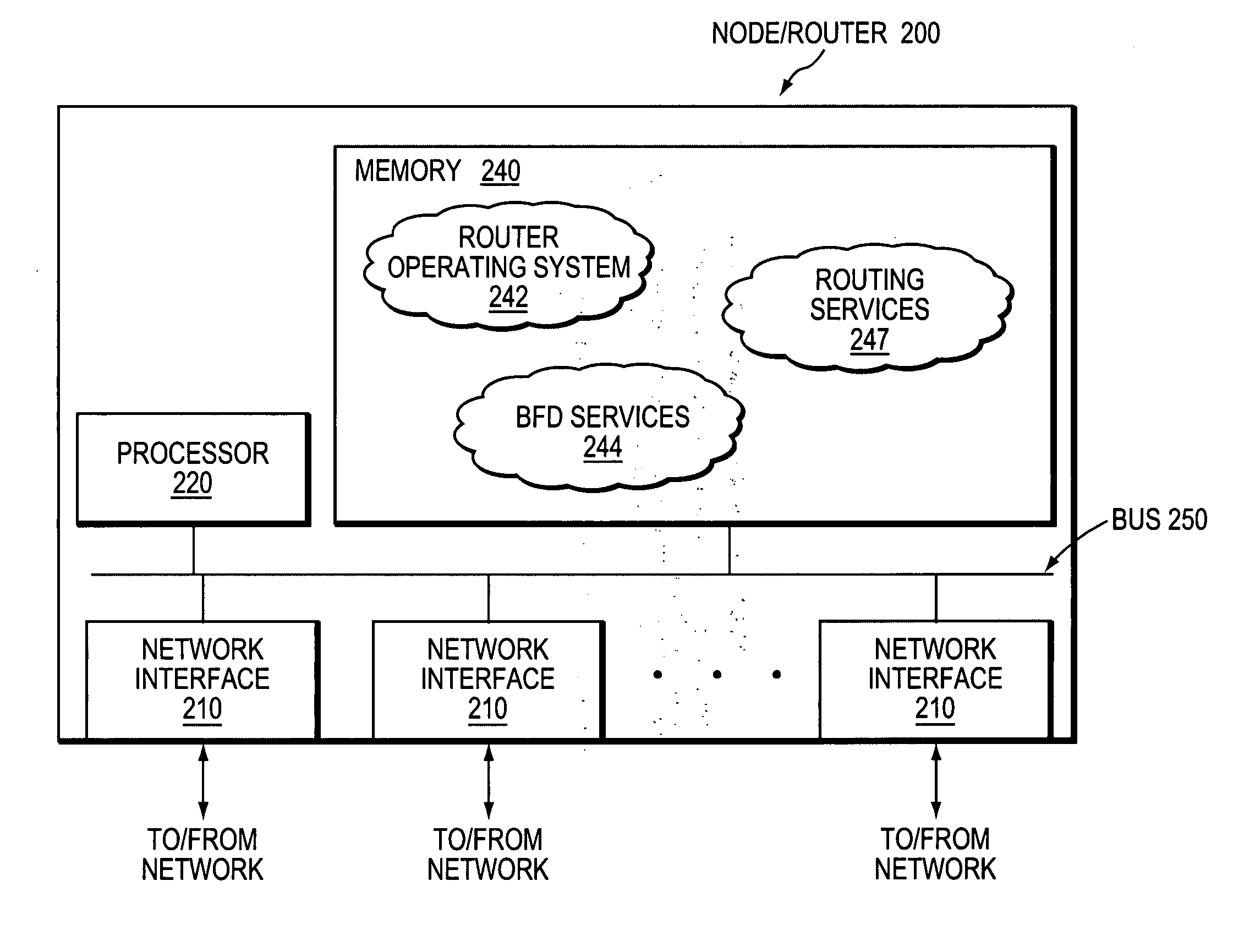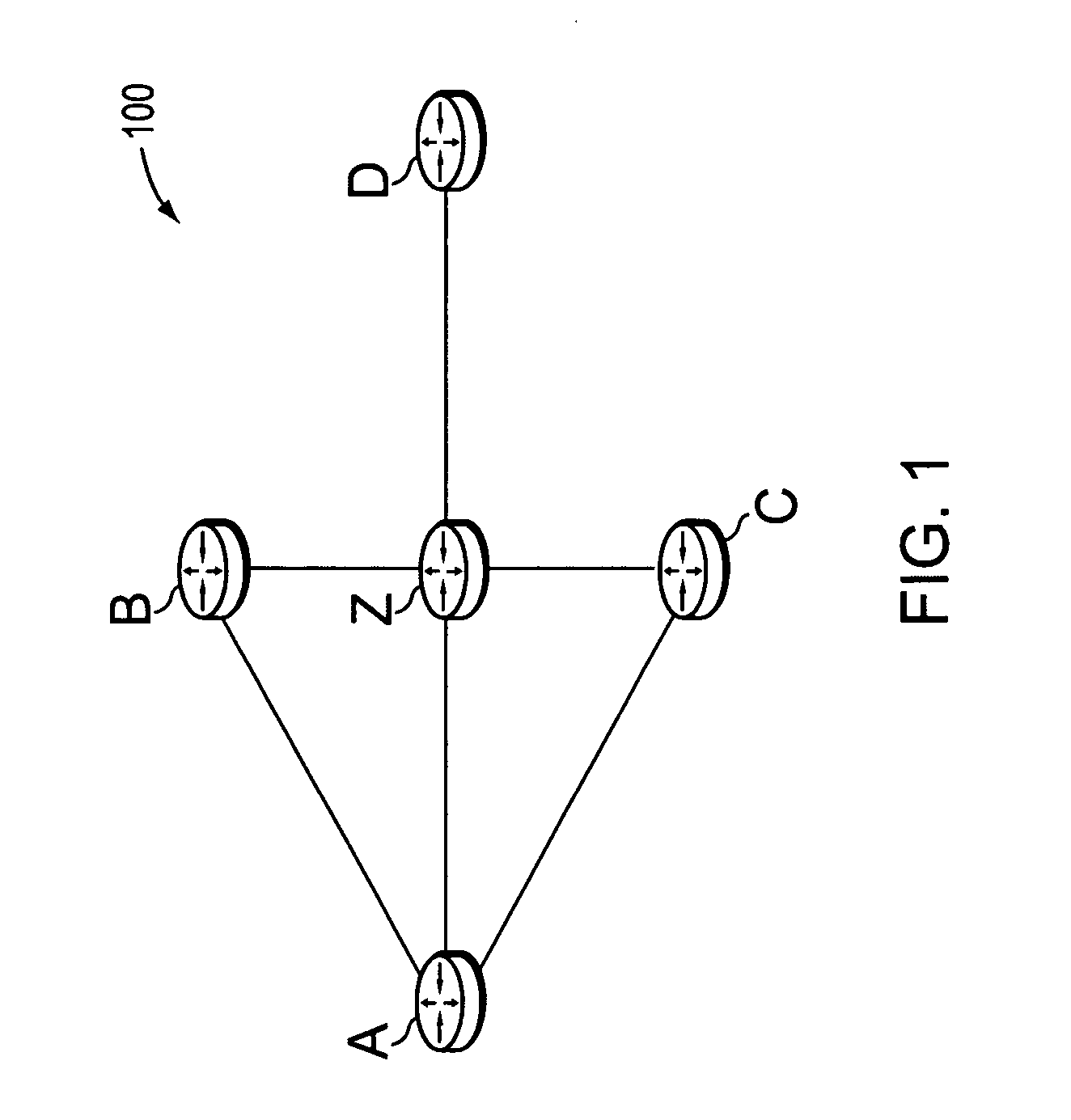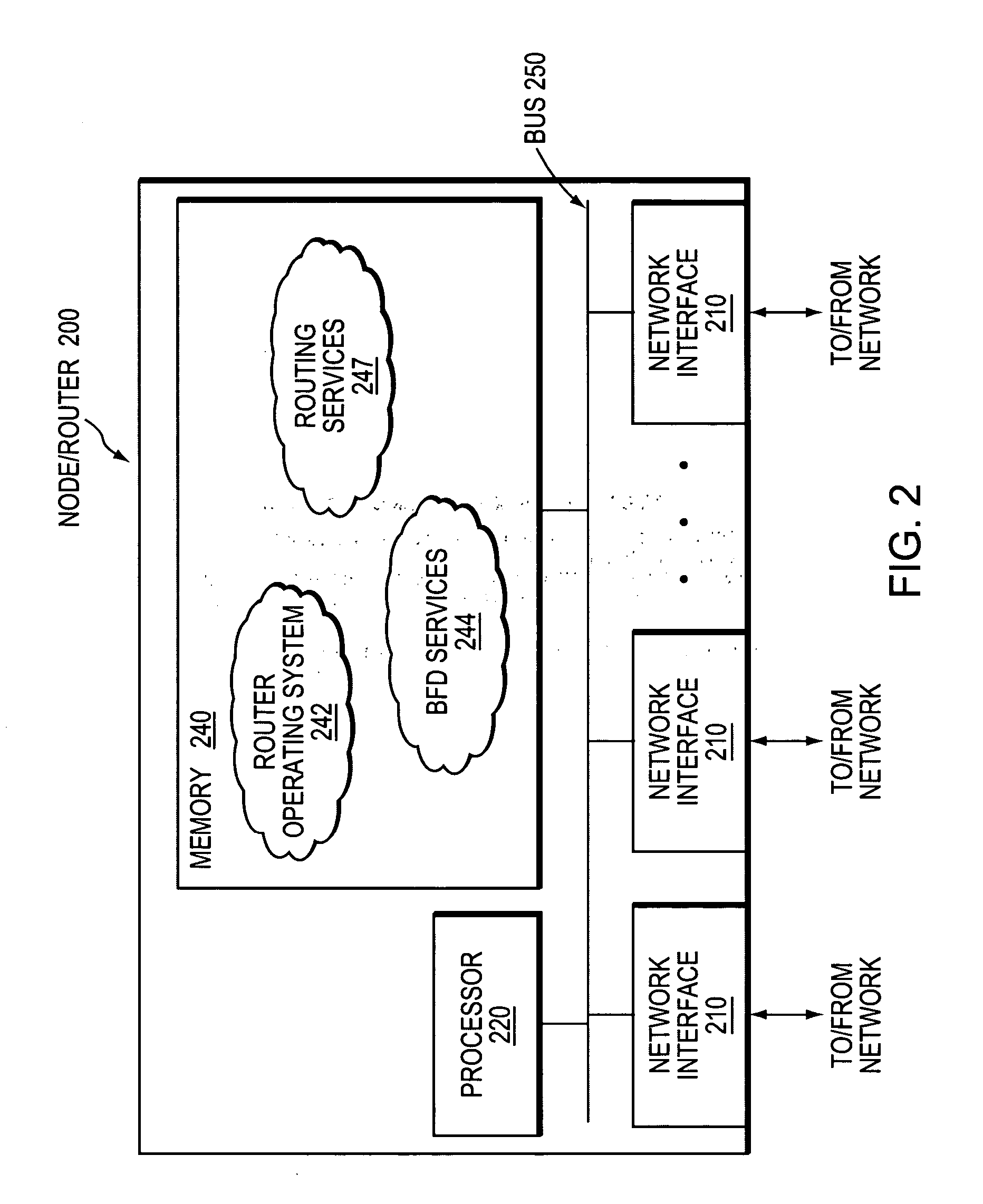Technique for distinguishing between link and node failure using bidirectional forwarding detection (BFD)
a technology of bidirectional forwarding and node failure, applied in the field of computer networks, can solve the problems of devices breaking, destroying or closing the bgp session, and node becoming unable to communicate with one of its neighboring nodes, so as to minimize the performance of unnecessary node protection techniques and minimize false detection of failed nodes.
- Summary
- Abstract
- Description
- Claims
- Application Information
AI Technical Summary
Benefits of technology
Problems solved by technology
Method used
Image
Examples
Embodiment Construction
[0028]FIG. 1 is a schematic block diagram of an exemplary computer network 100 comprising a plurality of nodes A-D and Z, such as routers or other network devices, interconnected as shown. The nodes may be a part of one or more autonomous systems, routing domains, or other networks or subnetworks. For instance, router Z may be a provider edge (PE) device of a provider network, (e.g., a service provider network) that is interconnected to one or more customer networks through customer edge (CE) devices, such as router A. Those skilled in the art will understand that the nodes A-D and Z may be any nodes within any arrangement of computer networks, and that the view shown herein is merely an example. For example, the nodes may be configured as connections to / from one or more virtual private networks (VPNs), as will be understood by those skilled in the art. Notably, the links between the nodes may be represented herein as A-Z, B-Z, etc. Moreover, the links may also be represented as Z-A...
PUM
 Login to View More
Login to View More Abstract
Description
Claims
Application Information
 Login to View More
Login to View More - R&D
- Intellectual Property
- Life Sciences
- Materials
- Tech Scout
- Unparalleled Data Quality
- Higher Quality Content
- 60% Fewer Hallucinations
Browse by: Latest US Patents, China's latest patents, Technical Efficacy Thesaurus, Application Domain, Technology Topic, Popular Technical Reports.
© 2025 PatSnap. All rights reserved.Legal|Privacy policy|Modern Slavery Act Transparency Statement|Sitemap|About US| Contact US: help@patsnap.com



